Sind 5000 Watt viel Strom? Verständnis gängiger Haushaltsgeräte und ihres Stromverbrauchs
Werden 5000 Watt als hoher Stromverbrauch für Haushaltsgeräte angesehen?
In der heutigen energiebewussten Welt fragen sich viele: „Sind 5000 Watt Strom im Haushalt viel?“ Es ist wichtig zu verstehen, wie sich diese Leistung im Vergleich zum Energiebedarf gängiger Haushaltsgeräte verhält. Die Antwort hängt vom Kontext ab: Wie lange der Strom verbraucht wird, welche Geräte ihn verbrauchen und ob er gleichzeitig genutzt wird. Dieser Artikel untersucht anhand verschiedener Geräte, Nutzungsszenarien und Tipps zum Energieverbrauch, ob 5000 Watt Strom ein hoher Verbrauch sind.
- Die Grundlagen des Stromverbrauchs von 5000 Watt verstehen
- Gängige Haushaltsgeräte mit einem Stromverbrauch von 5000 Watt oder weniger
- Sind 5000 Watt Strom für ein einzelnes Gerät hoch?
- Wie lange können Geräte mit einem Stromverbrauch von 5000 Watt betrieben werden?
- Vergleich von 5000 Watt Strom mit Solarstromanlagen
- Verwaltung und Reduzierung des Stromverbrauchs von 5000 Watt
- Wenn ein Stromverbrauch von 5000 Watt problematisch wird
- Praktische Beispiele für 5000-Watt-Stromverbrauchsszenarien
Die Grundlagen des Stromverbrauchs von 5000 Watt verstehen
Was bedeuten 5000 Watt wirklich?
Bevor wir feststellen können, ob 5000 Watt Strom eine hohe Verbrauchsmenge darstellen, müssen wir verstehen, was ein Watt ist. Ein Watt ist eine Leistungseinheit, die den Energieverbrauch angibt. 5000 Watt entsprechen 5 Kilowatt (kW). Wenn Sie ein 5000-Watt-Gerät eine Stunde lang verwenden, verbraucht es 5 Kilowattstunden (kWh) Energie.
Ein durchschnittlicher US-Haushalt verbraucht etwa 877 kWh pro Monat, was etwa 29 kWh pro Tag entspricht. Die Nutzung von 5000 Watt für nur eine Stunde verbraucht fast 17 % dieses Tagesdurchschnitts.
Leistung vs. Energie
Es ist wichtig, zwischen Leistung (Watt) und Energie (Kilowattstunden) zu unterscheiden. Leistung bezeichnet die Rate, mit der Strom verbraucht wird, während Energie die Gesamtmenge bezeichnet, die über einen bestimmten Zeitraum verbraucht wird. Ein Stromverbrauch von 5000 Watt kann je nach Dauer hoch oder moderat sein.
Gängige Haushaltsgeräte mit einem Stromverbrauch von 5000 Watt oder weniger
Geräte mit hoher Nennleistung
Einige Haushaltsgeräte verbrauchen fast oder mehr als 5000 Watt Strom, insbesondere wenn sie nur kurzzeitig in Betrieb sind. Dazu gehören:
Zentrale Klimaanlagen: 3000 bis 5000 Watt
Elektrische Warmwasserbereiter: 4000 bis 5500 Watt
Elektrobacköfen: 2000 bis 5000 Watt
Wäschetrockner: 1800 bis 5000 Watt
Obwohl diese Geräte viel Strom verbrauchen, laufen sie oft nur für kurze Zeit.
Geräte mit moderatem Stromverbrauch
Andere gängige Haushaltsgeräte verbrauchen weit weniger als 5000 Watt Strom:
Kühlschränke: 100 bis 800 Watt
Fernseher: 50 bis 400 Watt
Mikrowellenherde: 600 bis 1200 Watt
Geschirrspüler: 1200 bis 2400 Watt (hauptsächlich zum Erhitzen von Wasser)
Wie Sie sehen, können mehrere kleinere Geräte gleichzeitig verwendet werden, ohne dass die 5000-Watt-Grenze erreicht wird.
>>Siehe auch: Warum Sie in eine Batteriebox investieren sollten. Der ultimative Leitfaden zu Batteriespeicherlösungen.
Sind 5000 Watt Strom für ein einzelnes Gerät hoch?
Einzelgerätekontext
Im Zusammenhang mit einem einzelnen Gerät gelten 5000 Watt typischerweise als hoch. Die meisten Haushaltsgeräte sind jedoch auf einen deutlich geringeren Stromverbrauch ausgelegt. Wenn ein Gerät diesen Wert erreicht, dient es in der Regel speziellen Zwecken, wie z. B. Industriegeräten oder großen Heizsystemen.
Gleichzeitige Nutzung
Wenn jedoch mehrere Geräte gleichzeitig laufen, kann ihre Gesamtleistung 5000 Watt erreichen oder überschreiten. Beispielsweise beträgt der gleichzeitige Betrieb eines Backofens (3000 W), einer Mikrowelle (1000 W) und eines Geschirrspülers (1800 W) insgesamt 5800 Watt.
Wie lange können Geräte mit einem Stromverbrauch von 5000 Watt betrieben werden?
Tägliche und monatliche Kostenschätzungen
Nehmen wir an, Sie verbrauchen zwei Stunden am Tag 5000 Watt Strom. Das entspricht 10 kWh täglich oder 300 kWh monatlich. Bei einem durchschnittlichen Stromtarif von 0,13 $ pro kWh würden Ihre monatlichen Kosten etwa 39 $ betragen.
Wenn Sie täglich vier Stunden lang 5000 Watt Strom verbrauchen, verdoppeln sich Ihre Kosten auf etwa 78 Dollar monatlich. Daher wirkt sich eine anhaltende Nutzung erheblich auf Ihre Stromrechnung aus.
Überlegungen zur Stromkreislast
Stromkreise in Wohngebäuden sind typischerweise für 15 bis 20 Ampere ausgelegt. Bei 120 Volt sind damit 1800 bis 2400 Watt pro Stromkreis möglich. Ein einzelnes 5000-Watt-Gerät benötigt möglicherweise einen eigenen 240-Volt-Stromkreis, um sicher zu funktionieren.
Vergleich von 5000 Watt Strom mit Solarstromanlagen
Leistung des Solarsystems für Privathaushalte
Eine typische Solaranlage für Privathaushalte erzeugt etwa 250 bis 400 Watt pro Modul. Eine 5-kW-Anlage besteht aus 12 bis 20 Modulen. Bei optimaler Sonneneinstrahlung kann sie 5000 Watt Strom liefern und ist damit eine sinnvolle Lösung zum Ausgleich eines hohen Stromverbrauchs.
Batterie-Backup-Kapazität
Batteriesysteme wie die Tesla Powerwall speichern rund 13,5 kWh, genug, um eine 5000-Watt-Last etwa 2,7 Stunden lang zu betreiben. Dies ist nützlich bei Stromausfällen oder netzunabhängigen Szenarien.
Verwaltung und Reduzierung des Stromverbrauchs von 5000 Watt
Energieeffiziente Geräte
Durch die Umstellung auf ENERGY STAR-zertifizierte Geräte lässt sich der Gesamtverbrauch deutlich senken. Moderne Waschmaschinen, Trockner und Heizungs-, Lüftungs- und Klimasysteme sind so konzipiert, dass sie bei gleicher Leistung weniger Strom verbrauchen.
Smart-Home-Automatisierung
Intelligente Thermostate, Stecker und Energiemonitore können dabei helfen, zu steuern, wann und wie viel Strom Geräte verbrauchen, und so die Gesamtzeit reduzieren, in der 5.000 Watt Strom verbraucht werden.
Verhaltensänderungen
Einfache Gewohnheiten wie das Betreiben von Geräten mit hohem Stromverbrauch außerhalb der Spitzenzeiten, das Ausschalten nicht verwendeter elektronischer Geräte und das Anpassen der Thermostateinstellungen können den Gesamtverbrauch senken.
Wenn ein Stromverbrauch von 5000 Watt problematisch wird
In Wohnmobilen und Tiny Homes
In mobilen oder kompakten Wohnumgebungen können 5000 Watt Strom das System schnell überfordern. Die meisten Wohnmobile und Tiny Houses sind für maximal 30 bis 50 Ampere ausgelegt, was etwa 3600 bis 6000 Watt entspricht.
In älteren Häusern
Ältere Häuser mit veralteter Verkabelung können eine Dauerleistung von 5000 Watt möglicherweise nicht sicher bewältigen. Eine Modernisierung der Schalttafel und der Verkabelung kann erforderlich sein.
>>Siehe auch: Was ist der ideale Ladezustand für eine 48-Volt-Golfwagenbatterie?
Praktische Beispiele für 5000-Watt-Stromverbrauchsszenarien
Szenario 1: Küchengeräte-Kombination
Elektroofen: 3000 W
Mikrowelle: 1000 W
Kaffeemaschine: 800 W
Gesamt: 4800 W
Diese Einstellung ist während der Essenszubereitungszeiten realistisch und bleibt unter der 5000-Watt-Schwelle.
Szenario 2: Waschtag
Waschmaschine: 500 W
Elektrischer Trockner: 4000 W
Bügeleisen: 1500 W
Gesamt: 6000 W
Der gleichzeitige Betrieb aller drei Geräte übersteigt die Stromstärke von 5.000 Watt und kann zu einer Überlastung der Stromkreise führen.
Szenario 3: Sommerkühlung
Zentrale Klimaanlage: 3500 W
Deckenventilatoren: 150 W
Luftentfeuchter: 500 W
Gesamt: 4150 W
Auch in der Hochlastsaison können Sie mit einer sorgfältigen Steuerung unter der 5000-Watt-Grenze bleiben.
5000 Watt Strom und Haushaltsverbrauch
Zusammenfassend lässt sich sagen, dass die Frage, ob 5000 Watt Strom als hoch gelten, vom Kontext abhängt. Für ein einzelnes Gerät ist der Wert recht hoch, für einen ganzen Haushalt jedoch relativ moderat. Wenn Sie die Gerätenutzung, die elektrischen Einschränkungen und Energiesparstrategien verstehen, können Sie Ihren Stromverbrauch besser steuern. Mit Solarlösungen und Smart-Home-Technologie lassen sich selbst 5000 Watt Strom effizient und sparsam nutzen.
Wenn Sie verstehen, wie und wann Sie 5000 Watt Strom verbrauchen, können Sie Ihren Energieverbrauch optimieren und die Kosten kontrollieren. Im modernen Haushalt ist Energiebewusstsein genauso wichtig wie der Strom selbst.



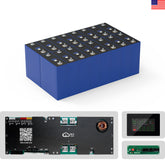

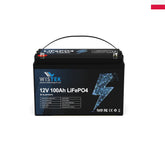
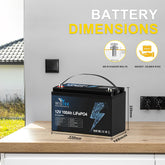

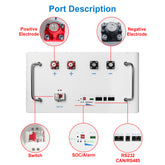
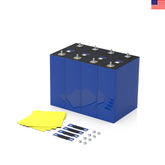
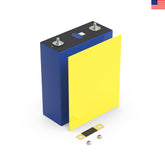
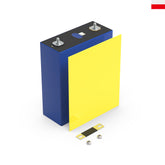

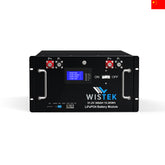
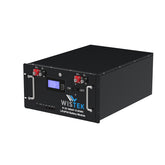
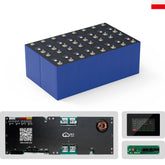








1 comment
Since the author is not listed, I will refer to the expertise behind the post. This is an incredibly helpful post! The core message is high for one appliance but moderate for a whole house. Crucial takeaways: Safety: High loads often require a dedicated circuit. Usage: Easily exceeded. Excellent, actionable information! https://elescobill.com
Leave a comment
All blog comments are checked prior to publishing